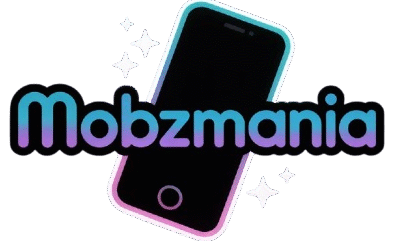Technology is racing forward faster than ever before, and 2025 promises to be a thrilling year for mobile innovation. The world is stepping into an era where smartphones are no longer just communication tools—they’ve become the core of our digital lifestyle. From artificial intelligence to augmented reality, mobile technology waves for 2025 are redefining how people interact, work, and live. Let’s dive into these powerful transformations that are shaping the future of mobile apps and user experience
1. Android Instant Apps are on the rise
In 2025, Android Instant Apps are on the rise, changing how users try and experience applications. These apps allow users to access specific app features instantly, without needing to download or install them fully. For example, a user can book a movie ticket or order food through an instant app link within seconds. This feature saves storage space, improves loading speed, and boosts engagement rates. Google’s Android team continues to enhance instant app technology, making it a key player in app marketing and convenience for U.S. consumers.
2. Mobile artificial intelligence
Artificial intelligence is everywhere, and it’s redefining how we experience mobile devices. Among the Mobile Technology Waves for 2025, mobile artificial intelligence stands out as the driving force behind smarter and more adaptive smartphones. AI now fuels predictive text, virtual assistants, photo recognition, and even personalized app recommendations that evolve with user behavior. In 2025, AI-powered apps are becoming essential for managing schedules, tracking habits, and automating daily routines with precision. For businesses, this revolution extends further—AI enhances customer service through advanced chatbots, voice analysis, and real-time sentiment detection. According to Statista, more than 70% of mobile users in the United States rely on AI-driven mobile tools daily, proving how deeply integrated artificial intelligence has become in mobile app development and design.
3. Mobile security
With millions of transactions happening through apps, mobile security has become a top priority in 2025. Data breaches and privacy concerns have pushed developers to integrate end-to-end encryption, biometric verification, and secure cloud storage. Users now expect transparency about how their information is used. Security companies predict that over 80% of apps will use AI to detect cyber threats before they occur. The United States, known for strict data protection laws, continues to lead in promoting safe mobile ecosystems for both users and developers.
4. Geofencing and location-based services
Businesses in 2025 are heavily relying on geofencing and location-based services to reach their audience in real-time. This technology uses GPS or RFID to trigger specific actions when a user enters or leaves a geographic boundary. Retail stores, restaurants, and delivery apps use it to send personalized promotions or track deliveries efficiently. For instance, Starbucks uses geofencing to notify customers about nearby discounts, while ride-hailing apps like Uber depend on it for accurate pickup coordination. The rise of 5G connectivity has made geofencing more precise, faster, and reliable.
5. Mobile applications for small businesses
The demand for mobile applications for small businesses has surged dramatically across the United States, marking one of the most impactful Mobile Technology Waves for 2025. From neighborhood cafés and boutiques to service-based startups, entrepreneurs are embracing mobile apps as their primary connection to customers. These apps make it easier to handle online orders, digital payments, and customer loyalty programs with seamless efficiency. Thanks to affordable, no-code platforms like Appy Pie, BuildFire, and GoodBarber, small business owners can now develop feature-rich apps without any technical background. In 2025, this mobile-first movement is helping local businesses compete directly with larger corporations by offering convenience, personalization, and instant accessibility—proving that innovation isn’t just for big brands anymore.
6. Augmented reality will be incorporated into more apps
Augmented reality (AR) is no longer a futuristic dream—it’s already shaping mobile experiences. In 2025, augmented reality will be incorporated into more apps than ever before. From education and gaming to furniture design and retail, AR helps users visualize products in real environments. Apps like IKEA Place and Snapchat use AR to bridge imagination and reality. Developers are investing in Apple’s ARKit and Google’s ARCore to build more immersive experiences that keep users engaged and entertained.
7. Apps built for transportation are evolving
The transportation sector is being revolutionized by technology. Apps built for transportation are evolving rapidly in 2025, supporting electric vehicles, smart parking, and ride-sharing optimization. Companies like Tesla and Uber are integrating AI and IoT into their mobile platforms to provide real-time data, route efficiency, and safety alerts. The U.S. Department of Transportation estimates that over 60% of daily commuters use at least one transportation-related mobile app. The integration of autonomous driving features into these apps is also on the horizon.
8. Mobile app revenue is on the rise
The mobile app economy in 2025 is breaking records. According to App Annie, mobile app revenue is on the rise, with global downloads exceeding 200 billion annually. U.S. consumers spend more on in-app purchases and subscriptions than ever before. Developers are exploring monetization models like freemium, subscription-based access, and ad-supported content. The gaming, streaming, and fitness app categories are the biggest contributors to this surge. For developers and investors, mobile technology remains one of the most profitable industries.
9. Wearable technology being paired with mobile apps
In 2025, wearable technology being paired with mobile apps is enhancing personal health and fitness tracking. Smartwatches, fitness bands, and even AR glasses are now syncing seamlessly with smartphones. This pairing allows users to track heart rate, sleep patterns, and stress levels in real time. Health apps now integrate medical monitoring features, alerting users about irregularities and connecting them directly with healthcare providers. The wearable market in the U.S. is expected to surpass $65 billion by the end of 2025, proving that people value health data accessibility.
10. People will control their homes with a mobile app
Smart homes are quickly shifting from being a luxury to becoming a standard part of modern living in the United States, representing one of the most influential Mobile Technology Waves for 2025. Today, homeowners can control their entire house through a mobile app, managing lighting, security cameras, thermostats, and even kitchen appliances—all from the palm of their hand. Leading systems like Google Home, Amazon Alexa, and Apple HomeKit have completely redefined how families interact with their spaces. As we move further into 2025, mobile applications are increasingly integrating voice commands, artificial intelligence, and automated routines to create homes that are more efficient, secure, and energy-conscious. Experts forecast that more than 70 million American households will own at least one smart home device connected to a mobile app, proving that the future of home management is not just digital—it’s mobile-driven.
11. Cross platform mobile development
Developers are embracing cross platform mobile development tools like Flutter, React Native, and Xamarin to save time and resources. These frameworks enable apps to run smoothly on both Android and iOS without separate coding. For startups and small companies, cross-platform solutions reduce costs and allow faster updates. The unified development process also ensures that user experiences remain consistent across devices, which is essential for brand identity and engagement in the U.S. market.
12. Mobile payments are on the rise
As cashless transactions dominate, mobile payments are on the rise across the United States. Users prefer digital wallets such as Apple Pay, Google Pay, and Venmo for everyday shopping. The combination of security, speed, and convenience is driving this change. A study by Statista shows that over 85% of American adults made at least one mobile payment per week in 2025. Businesses that adopt contactless payment systems are witnessing higher customer satisfaction and loyalty.
13. Virtual reality apps
Immersive experiences are capturing people’s attention, and virtual reality apps are playing a central role in 2025. VR is being used in training, entertainment, education, and therapy. Mobile devices now support VR headsets, offering lifelike experiences through lightweight designs. Companies like Meta, Sony, and Samsung are expanding their VR ecosystems, allowing users to attend virtual concerts, travel simulations, or corporate meetings from their phones. The VR app industry is expected to reach $40 billion globally by 2025.
14. Biometrics
Security continues to evolve with biometrics as the new frontier. Fingerprint scanning, facial recognition, and voice authentication are now standard in most smartphones. In 2025, even financial and healthcare apps are adopting biometric verification for access control. A report by IBM found that biometric systems reduce fraud risk by 75%. As privacy regulations tighten in the U.S., developers are designing biometric solutions that prioritize transparency and consent while offering unmatched convenience.
15. Cloud-based technology
Every app today depends on cloud-based technology for data storage, scalability, and reliability. Cloud solutions ensure that users can access their files, photos, and apps from any device. Major providers like Amazon Web Services (AWS) and Google Cloud continue to power mobile backends efficiently. In 2025, cloud gaming, cloud photo storage, and remote work applications are experiencing record growth. Developers prefer cloud infrastructure because it offers faster deployment, secure backups, and cost-effective scalability.
16. Personalization is still king
Even with all the innovation, personalization is still king in mobile app design. Users expect apps to understand their behavior, preferences, and needs. Personalized recommendations in Netflix, Amazon, and Spotify are perfect examples. AI algorithms collect user data to create tailored content and offers. A personalized experience builds loyalty, increases engagement, and drives conversions. In 2025, personalization is not just an option—it’s the foundation of user satisfaction.
17. BYOD
The modern workplace is evolving rapidly, and one of the defining Mobile Technology Waves for 2025 is the widespread adoption of BYOD (Bring Your Own Device) policies. Employees today prefer using their personal smartphones, tablets, and laptops for work-related activities, allowing them to stay productive from virtually anywhere. For businesses, this shift brings major cost savings by reducing the need for company-provided hardware. However, it also introduces new mobile security challenges that require careful management. That’s where Mobile Device Management (MDM) systems come into play—ensuring sensitive company data remains protected without limiting employee freedom. In the United States, more than 70% of enterprises have already adopted BYOD strategies, signaling that this flexible work approach isn’t just a passing phase—it’s a sustainable, productivity-boosting transformation defining the digital workplace of 2025.
18. In-App Gestures
Reasons Why Gestures are Preferred Over Buttons
The future of mobile interaction is moving beyond buttons. In-App Gestures like swipes, pinches, and long presses create smoother and more intuitive experiences. Reasons Why Gestures are Preferred Over Buttons include simplicity, aesthetics, and accessibility. Users find gestures faster and more natural, especially on larger screens. In 2025, most leading apps focus on gesture-based navigation for cleaner interfaces and improved usability. Designers believe that gestures help create a deeper emotional connection between users and apps.
19. Minimalistic Interface
A Minimalistic Interface focuses on simplicity and clarity. It removes distractions, making content the hero of the design. In 2025, app designers are adopting flat design principles, pastel color palettes, and adaptive typography. Minimalism not only looks modern but also improves loading times and user focus. A study by Adobe found that users spend 40% longer on apps that have minimalistic layouts. The trend aligns with the rise of gesture controls and motion-based feedback.
20. User On-boarding
A smooth User On-boarding process has become a defining factor in the Mobile Technology Waves for 2025, as it directly impacts whether a user continues with an app or abandons it after the first try. This early experience sets the tone for trust, engagement, and satisfaction. Modern app developers are prioritizing interactive tutorials, real-time progress tracking, and smart pop-up guidance to make newcomers feel confident and connected from the start. Leading brands like Duolingo and Canva have mastered onboarding by blending education with entertainment—turning learning moments into delightful experiences. As 2025 unfolds, onboarding will go a step further through mobile artificial intelligence, which personalizes app tutorials based on each user’s learning pace and behavior. This innovation ensures that first impressions aren’t just smooth—they’re memorable, adaptive, and deeply human.
21. User Off-boarding
Many businesses overlook User Off-boarding, but it plays a vital role in brand reputation. When users decide to leave, apps that handle this process gracefully tend to win their respect. Clear communication, feedback collection, and secure data deletion are essential elements. For example, Netflix’s simple cancellation process shows how transparency builds trust. In 2025, user off-boarding will become a metric of ethical app design, reflecting a company’s integrity and user-first values.
22. Internet of Things
The Internet of Things (IoT) continues to connect devices everywhere. From smart fridges to connected cars, IoT apps allow users to control multiple devices through one platform. In 2025, IoT adoption in U.S. homes is expected to reach 75%. The combination of AI and 5G improves device communication speed, reliability, and energy efficiency. The healthcare industry, in particular, benefits from IoT through patient monitoring devices that transmit data to doctors in real time.
23. Animated and Motion Based Design
Finally, Animated and Motion Based Design is making mobile experiences more engaging than ever. Motion adds life to interfaces, guiding users smoothly between screens. Animations create emotional appeal, whether it’s a button bounce or a transition swipe. Experts say motion-based design improves user retention by 25%. In 2025, designers use animation to tell stories, highlight actions, and make digital interactions feel human and dynamic.
May Also Read: The Year of the Snake Google Game: A Nostalgic Noodle Through Time
Conclusion
The 23 Mobile Technology Waves for 2025 represent more than trends—they’re signs of a digital revolution. Every innovation, from Android Instant Apps to AI and IoT, reflects how technology adapts to human behavior. The U.S. market leads this transformation, driven by creativity, convenience, and security. Businesses, developers, and users must embrace these changes to stay ahead in an ever-evolving digital world. The future of mobile technology isn’t just coming—it’s already here.

Jake Miller is a mobile troubleshooting specialist with 7+ years of experience solving Android and app-related issues. He tests every fix on real devices to ensure accuracy and reliability. Jake creates simple, step-by-step guides to help users quickly resolve everyday smartphone problems.



